#rongorongo script
Explore tagged Tumblr posts
Text
1. Ge’ez Script
Ge’ez language is now generally only used as a liturgical language for Ethiopian Orthodox Church. Ge’ez script is used in Amharic, Tigrinya, Bilen, etc.
The Ge’ez script is an alphasyllabic writing system. The syllabary today has 26 consonantal letters with several forms vowel are diacritic marks fused to the letter.
2. Quipu
Incan Empire quipus were recording devices made from string. They were used to record mainly numerical data, such as taxes, census numbers, and calendrical information
These data were recorded onto the string in a series of knots of different types, each denoting different numbers.
3. Tengwar
J.R.R Tolkien writing systems created by J.R.R Tolkien an avid linguist who added his expertise in the field to his creative works of fiction.
One of several writing systems for the languages used in Middle Earth.
4. Rongorongo
Found on Rapa Nui AKA Easter Island. Rongorongo is a series of glyphs about which we know virtually nothing.
5. Sinhala Script
Used by the Sri Lankans to write the Sinhalese language, as well as the holy languages of Pali and Sanskrit, the Sinhala script is easily one of the most beautiful scripts in the world. It is used by the 16 million Sinhala speakers of Sri Lanka.
The Sinhala script is a syllabary and is written from left to right.
6. Classical Mongolian Script
This writing system enjoyed prominence throughout Mongolia for over 700 years until it was supplanted by the Cyrillic script, a result of being within the Soviet sphere of influence.
Invented by a Uyghur scribe by the name of Tata-Tongoone. Classical Mongolian of the few systems to be written vertically and left to right instead of right to left.
7. Nüshu
Used in Jiangyong County in Hunan Province in Southern China. Because of strict laws of patriarchal Confucianism that forbade women from doing many things.Women invented a writing system that they could claim as their own and as a way of rebelling against the patriarchal system
Nüshu was born and was used for writing personal diaries and letters between close female friends. It has 600 to 700 symbols represent a phonetic syllable.
#language#history#linguistics#writing script#list#international#geez#quipu#Mongolian#sinhalese#conlang#rongorongo script
12 notes
·
View notes
Text
I'm going straight for that statue they stole from Rapa Nui and giving it back to the island. Cuz like... the name the Rapa Nui people gave that statue literally translates to "Our Stolen Friend" and that breaks my fucking heart. And after all they had already been through leading up to that point, where they didn't even have the strength or numbers to fight for their beloved statue...
quick everyone get your things back from the British museum while they’re distracted
#i hate the british for that specifically#and many other things ofc#i also HATE white european “explorers”#i want to shove pipe bombs up their asses#when i learned about the real history of rapa nui i sobbed and became filled with rage#easter island#rapa nui#maoi#it was a genocide#are you even shocked atp?#polynesian#polynesia#rongorongo script
7K notes
·
View notes
Link
Easter Island and The Rongorongo Script
0 notes
Text
STUDI / La scrittura a Rapa Nui (Isola di Pasqua) è nata prima dell’arrivo degli europei?
STUDI / La scrittura a Rapa Nui (Isola di Pasqua) è nata prima dell’arrivo degli europei? Una di quattro tavolette in legno con incisioni in Rongorongo potrebbe essere antecedente all’arrivo delle prime navi europee, negli anni venti del Settecento.
Redazione Due gruppi di ricerca dell’Università di Bologna entrambi finanziati dallo ERC – Consiglio Europeo della Ricerca, insieme a studiosi internazionali, hanno pubblicato un articolo su Scientific Reports, rivista del gruppo Nature, dimostrando che la ricerca altamente interdisciplinare porta a risultati di successo. I due progetti ERC che hanno guidato lo studio sono INSCRIBE – Invention…

View On WordPress
#alfabeto#archeologia#In evidenza#INSCRIBE - Invention of Scripts and their Beginnings#iscrizioni#Isola di Pasqua#Mike Friedrich#Rapa Nui#Rongorongo#Sahra Talamo#Scientific Reports#scoperte#scrittura#Silvia Ferrara#studi#Università di Bologna#Università di Hohenheim
14 notes
·
View notes
Link
4 notes
·
View notes
Text
7 undeciphered writing systems
(While reading, remember that it’s possible to decipher a script and still not understand the language that the script represents.)
(Each heading links to that script's respective Wikipedia page.)
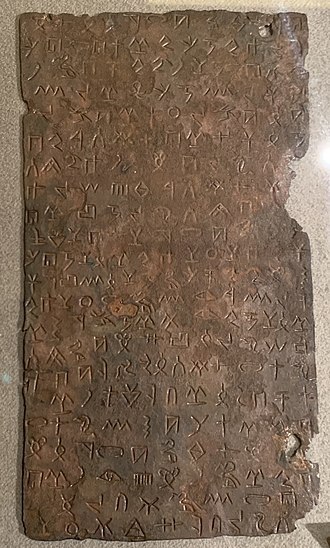
Byblos Syllabary
The Byblos syllabary is attested in 10 inscriptions found in Byblos, a coastal city in Lebanon. It likely represents a Semitic language, but despite a handful of attempts at decipherment, there still isn’t a consensus as to what sound each character represents.

Cypro-Minoan Syllabary
The Cypro-Minoan syllabary appears on ~250 objects—especially clay balls and cylinders that were used for recording economic transactions—on the island of Cyprus.
The script suddenly disappears in 950 BCE and was replaced by the Cypriot syllabary, which was used to write Greek, and based on Cypro-Minoan. This evolution allows us to infer the sounds of some of the signs in Cypro-Minoan, but we still don’t know what language it represented—probably either Minoan or Eteocypriot.
There are only ~2,500 total instances of signs for Cypro-Minoan, which is significantly less than Linear B when it was deciphered (~30,000).
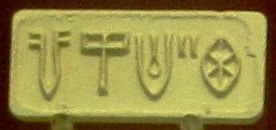
Indus Valley Script
The Indus Valley script is known from ~4,000 objects with very short inscriptions found in and around the Indus Valley, and represents the Harappan language (the unknown language of the Indus Valley civilization).
It has about 400 distinct signs, which is too many for each sign to represent a single sound or syllable, but too few for each sign to represent a word. Scholars thus think the system is logo-syllabic (basically a mix of the two).
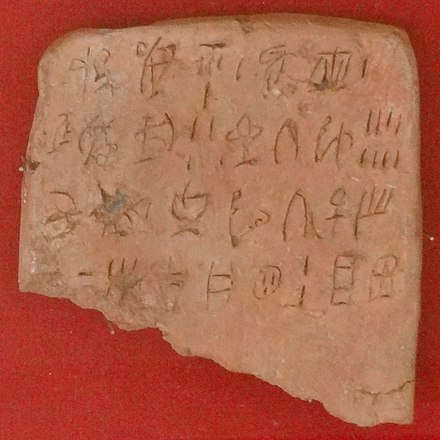
Linear A
Linear A: Everybody’s favorite mysterious undeciphered script. Linear A was used by the Minoans on the island of Crete, and is called “linear” because the script is written by cutting lines into clay, rather than pressing wedges into clay like cuneiform.
Linear A was adapted to write Mycenean Greek and became Linear B (deciphered in the 1950s), and because of this we can infer many of the sound values of symbols in Linear A. However, 80% of Linear A’s signs are unique, not shared with Linear B.
Linear A itself probably developed from the earlier Cretan hieroglyphs, which are also undeciphered.
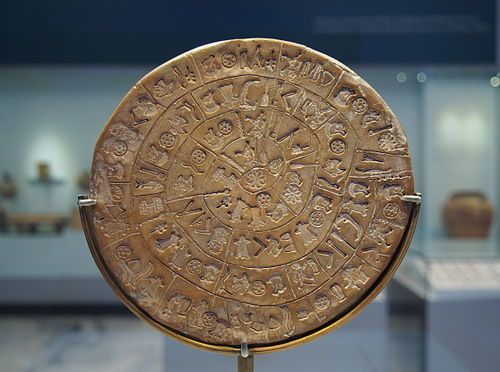

Phaistos Disk
The Phaistos Disk. Also from the Minoan civilization on Crete, yet seemingly unrelated to Linear A. This disk is the only certain attestation of this (assumed) script, spiraling around both sides. There are 242 tokens comprising 45 distinct signs.
The Phaistos Disk also happens to be an early example of moving type printing, since each character was made by pressing seals into clay.
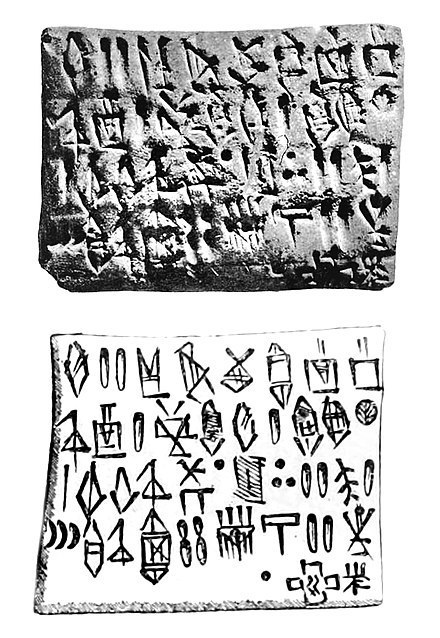
Proto-Elamite
The Proto-Elamite script developed alongside Proto-Cuneiform, and was used for similar functions and in similar ways until it was replaced by cuneiform. Proto-Elamite, like cuneiform, began as a system of marking tokens and spheres with details of economic transactions.

Rongorongo
Rongorongo is a system of glyphs used on Rapa Nui (Easter Island), found only on about two dozen wooden objects. According to oral history, the tablets were considered sacred, and only a small elite class could read them. Unfortunately, that tradition was wiped out after slaving raids and epidemics caused the collapse of Rapa Nui society.
Though the glyphs, if they are writing, undoubtedly represent the Rapa Nui language, little is known about it because modern Rapa Nui has had heavy influence from Tahitian.
---
Want to learn more about the world’s writing systems and their history? Check out my curated list of books on Writing & Writing Systems!
460 notes
·
View notes
Text
The Salado Phenomenon is what I’m writing my thesis on right now haha. The Wikipedia page for it sucks, don’t look at that. I need to do an overhaul of it one of these days
29 notes
·
View notes
Text
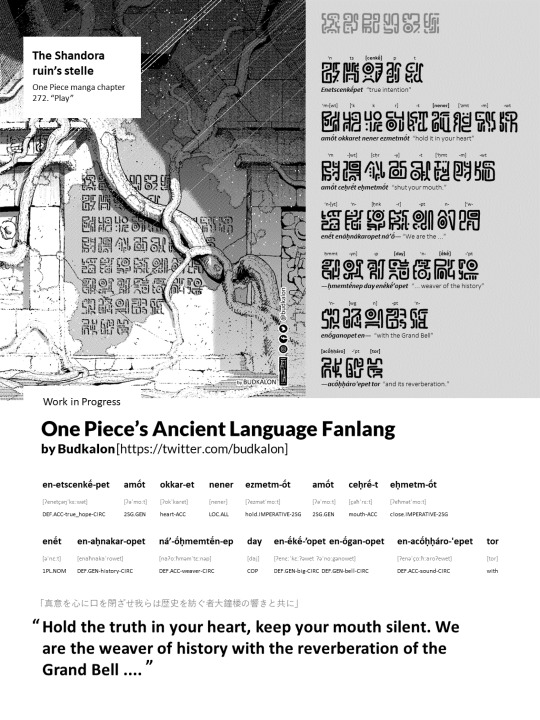
[PONEGLYPH FANLANG] Chapter 272's Stelle transcription and translation
Hello, back with the Poneglyph Fanlang!
After previously translating Roger's words on the Shandora Grand Bell, as seen here: [WIP] One Piece's Ancient Language (Poneglyph) Fanlang, I'm now attempting to translate another Poneglyph with a full translation. In the canon manga, only two Poneglyphs have full translations. This one is from Chapter 272, "Play," and was discovered by Robin.
If you're familiar with the Japanese language, you might notice that the sentence structure is identical to Japanese syntax (SOV). The basic language used is Old Egyptian, employing a triconsonantal root system similar to Arabic.
Here are some words you might recognize if you know Japanese:
okkaret = kokoro (heart)
enṓganopet = ogane (big bell)
You may notice that the same sound can be represented by completely different glyphs. This is because the Poneglyph uses a system somewhat akin to the Maya script and Rongorongo script, allowing different glyphs for the same sound for aesthetic reasons. Another reason for these complex sound-to-glyph correspondences is to make Poneglyphs difficult to read and decipher by the government.
But let me be honest, the main reason is that the Poneglyph is a gibberish-type of conlang. It seems like Oda didn't create a fully functional conlang for Poneglyph and may have scribbled-down the script. Or perhaps Oda used a cipher conlang? Who knows.
#poneglyph#one piece#onepiece#conlang#constructed language#worldbuilding#fantasy language#nico robin#budkalon#linguistic#OP#fan conlang#fanlang
77 notes
·
View notes
Text
Please reblog for a bigger sample size!
If you have any fun fact about Rapa Nui, please tell us and I'll reblog it!
Be respectful in your comments. You can criticize a government without offending its people.
27 notes
·
View notes
Text

Rongorongo: The Easter Island Script - Steven Roger Fischer
1 note
·
View note
Text
Books: Writing from Invention to Decipherment: Ferrara, Montecchi and Vale (eds.) (2024)
Writing from Invention to Decipherment contains a wealth of global scholarship on ancient writing systems from China, Mesopotamia, Central America, and the Mediterranean, to more recent newly created scripts such as the Rongorongo from Easter Island, the Caroline Island scripts, as well as the alphabet. The aim is to dig into the foundations of writing, showcasing the complexities and varieties of scripts, from their invention to the potential decipherment of poorly understood scripts. The vo http://dlvr.it/THMCfl
0 notes
Text
youtube
Ancient Codes: The World’s Most Puzzling Undeciphered Languages #indus #script #mystery #unknown Here are some intriguing facts about scripts and languages that have mystified scholars and linguists: 1. The Voynich Manuscript: Written in an unknown script and an undeciphered language, the Voynich Manuscript is one of the most mysterious books in history. Dating back to the early 15th century, it contains illustrations of plants, astronomical diagrams, and what appear to be recipes. Despite extensive study, no one has been able to definitively decode its meaning or identify the language it uses. 2. The Phaistos Disc Discovered in 1908 on the Greek island of Crete, the Phaistos Disc is a circular clay tablet imprinted with symbols arranged in a spiral. The symbols represent a unique script that remains undeciphered to this day. The purpose and meaning of the disc are still a mystery, making it one of the most enigmatic artifacts from the ancient world. 3. Rongorongo: Rongorongo is a system of glyphs found on Easter Island, and it is one of the few The Rosetta Stonef a writing system that has yet to be deciphered. The symbols were likely used by the Rapa Nui people, but the knowledge of how to read them was lost, possibly due to cultural disruption or colonization. Today, scholars are still trying to understand its structure and meaning. 4. The Lost Language of the Indus Valley Civilization: The Indus Valley Civilization, which flourished around 2500 BCE in what is now Pakistan and northwest India, developed a script that remains undeciphered. Despite numerous attempts to understand the inscriptions found on seals and pottery, the language and script have resisted all efforts at translation, leaving a significant gap in our understanding of this ancient civilization. 5. The Rosetta Stone: While not mysterious in the sense of being undeciphered, the Rosetta Stone is an iconic artifact that unlocked the mysteries of Egyptian hieroglyphs. Discovered in 1799, it contains the same text in three different scripts: Greek, Demotic, and Egyptian hieroglyphs. The discovery and eventual deciphering of the Rosetta Stone in 1822 by Jean-François Champollion allowed historians to finally understand the ancient Egyptian language, revealing much about their culture and history. These examples illustrate how scripts and languages can both preserve and obscure knowledge across centuries, leaving behind puzzles that continue to challenge modern scholars.
0 notes